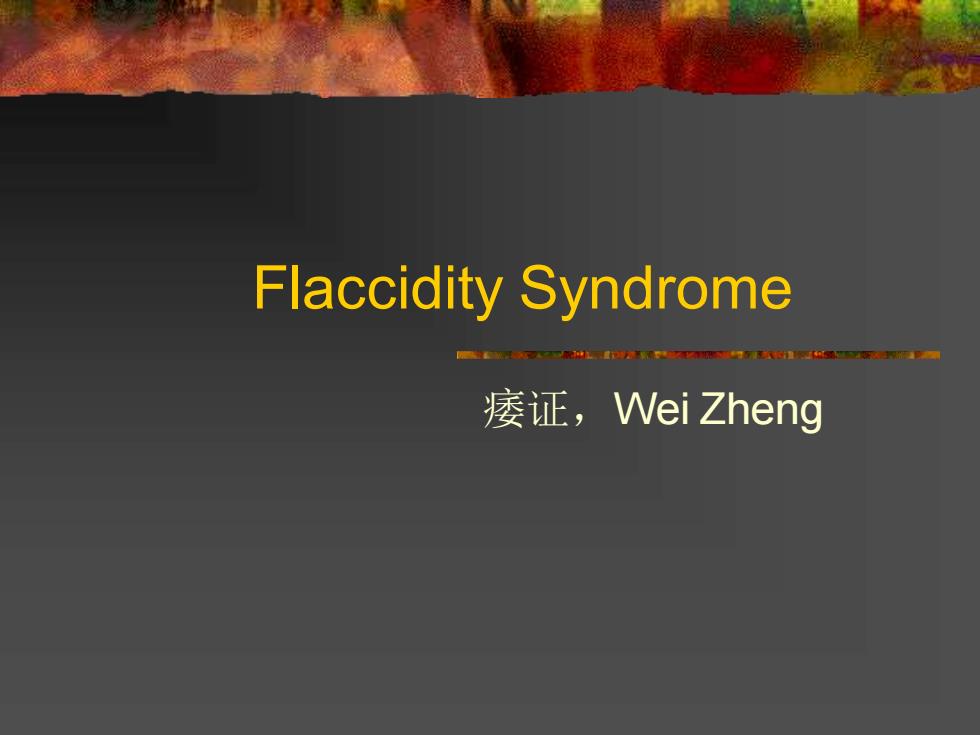
Flaccidity Syndrome 痿证,Nei Zheng
Flaccidity Syndrome 痿证,Wei Zheng
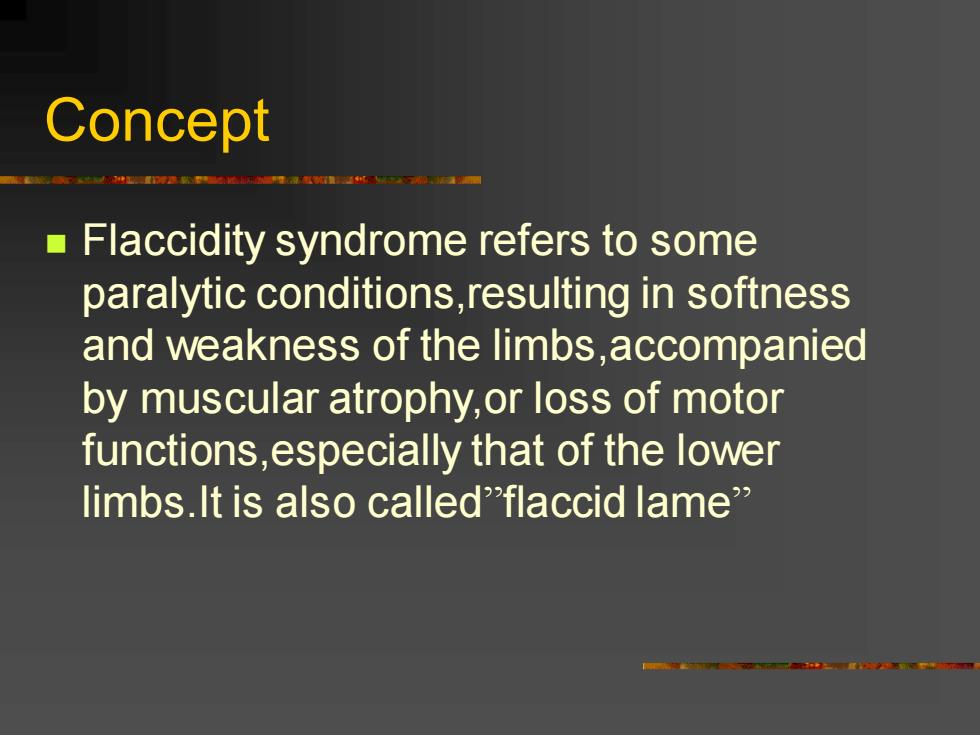
Concept Flaccidity syndrome refers to some paralytic conditions,resulting in softness and weakness of the limbs,accompanied by muscular atrophy,or loss of motor functions,especially that of the lower limbs.It is also called"flaccid lame
Concept ◼ Flaccidity syndrome refers to some paralytic conditions,resulting in softness and weakness of the limbs,accompanied by muscular atrophy,or loss of motor functions,especially that of the lower limbs.It is also called”flaccid lame
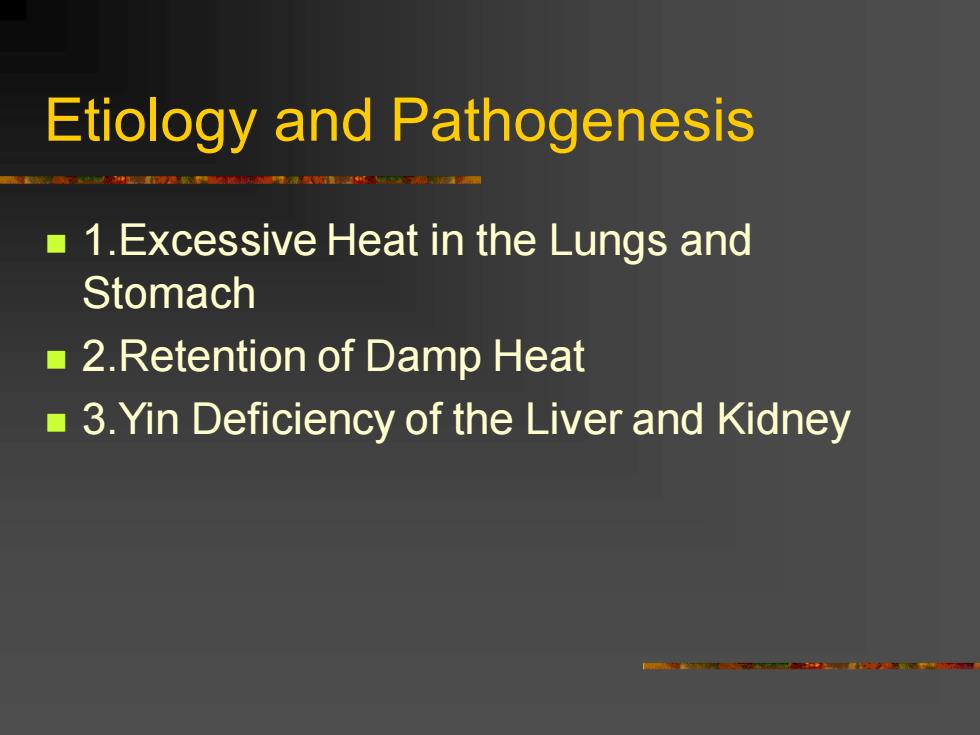
Etiology and Pathogenesis ■ 1.Excessive Heat in the Lungs and Stomach 2.Retention of Damp Heat 3.Yin Deficiency of the Liver and Kidney
Etiology and Pathogenesis ◼ 1.Excessive Heat in the Lungs and Stomach ◼ 2.Retention of Damp Heat ◼ 3.Yin Deficiency of the Liver and Kidney
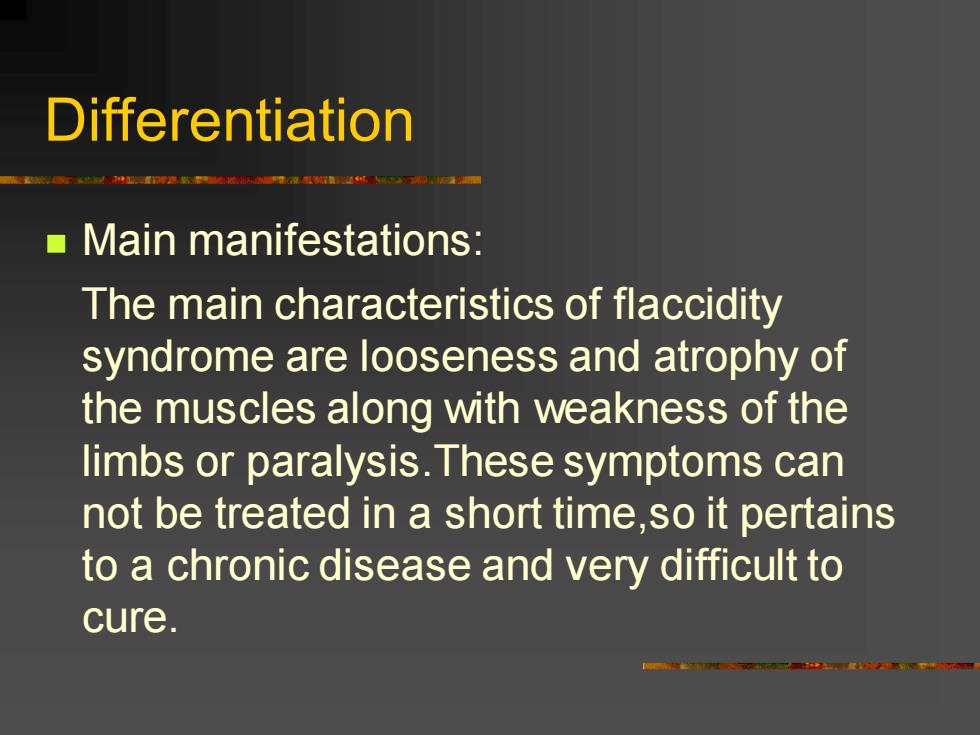
Differentiation Main manifestations: The main characteristics of flaccidity syndrome are looseness and atrophy of the muscles along with weakness of the limbs or paralysis.These symptoms can not be treated in a short time,so it pertains to a chronic disease and very difficult to cure
Differentiation ◼ Main manifestations: The main characteristics of flaccidity syndrome are looseness and atrophy of the muscles along with weakness of the limbs or paralysis.These symptoms can not be treated in a short time,so it pertains to a chronic disease and very difficult to cure
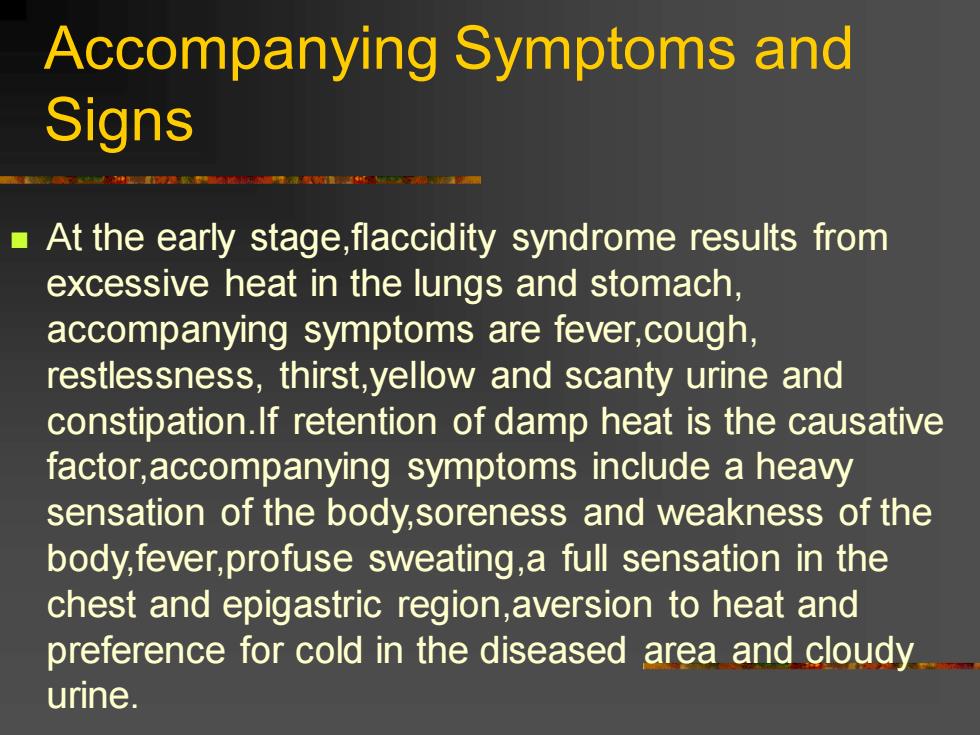
Accompanying Symptoms and Signs At the early stage,flaccidity syndrome results from excessive heat in the lungs and stomach, accompanying symptoms are fever,cough, restlessness,thirst,yellow and scanty urine and constipation.If retention of damp heat is the causative factor,accompanying symptoms include a heavy sensation of the body,soreness and weakness of the body,fever,profuse sweating,a full sensation in the chest and epigastric region,aversion to heat and preference for cold in the diseased area and cloudy urine
Accompanying Symptoms and Signs ◼ At the early stage,flaccidity syndrome results from excessive heat in the lungs and stomach, accompanying symptoms are fever,cough, restlessness, thirst,yellow and scanty urine and constipation.If retention of damp heat is the causative factor,accompanying symptoms include a heavy sensation of the body,soreness and weakness of the body,fever,profuse sweating,a full sensation in the chest and epigastric region,aversion to heat and preference for cold in the diseased area and cloudy urine

In case of deficiency of the liver and kidney,flaccidity syndrome may develop slowly.At the late stage of the disease,there may appear pallor complexion,soreness and weakness of the back and lumbar region,dizziness,blurring of vision,tinnitus and irregular menstruation in females
◼ In case of deficiency of the liver and kidney,flaccidity syndrome may develop slowly.At the late stage of the disease,there may appear pallor complexion,soreness and weakness of the back and lumbar region,dizziness,blurring of vision,tinnitus and irregular menstruation in females
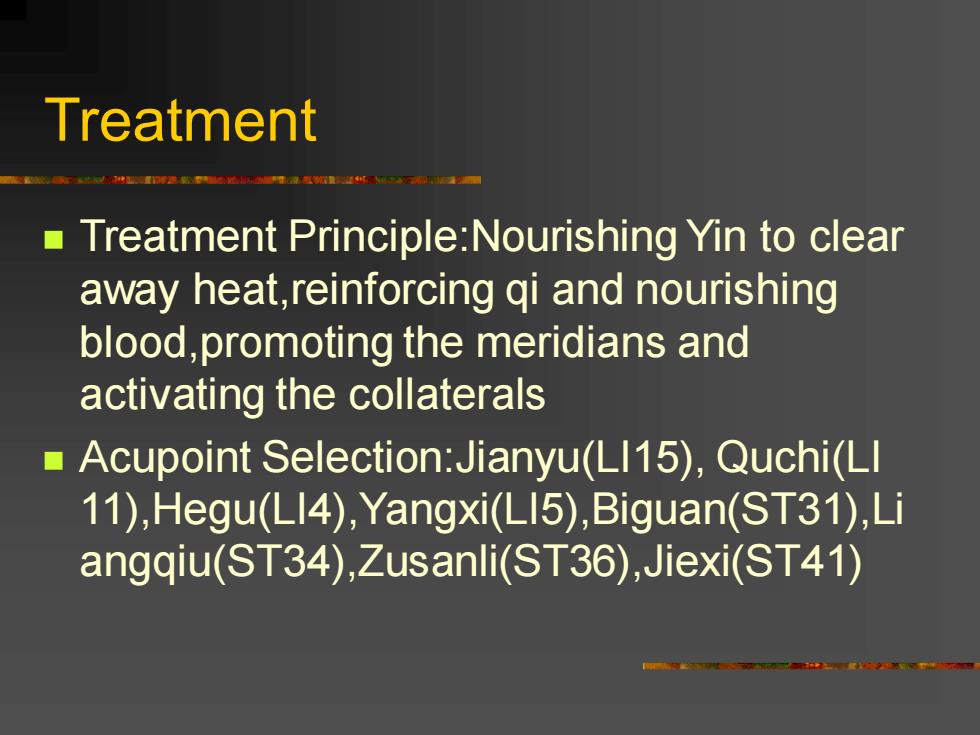
Treatment Treatment Principle:Nourishing Yin to clear away heat,reinforcing qi and nourishing blood,promoting the meridians and activating the collaterals Acupoint Selection:Jianyu(LI15),Quchi(LI 11),Hegu(LI4),Yangxi(LI5),Biguan(ST31),Li angqiu(ST34),Zusanli(ST36),Jiexi(ST41)
Treatment ◼ Treatment Principle:Nourishing Yin to clear away heat,reinforcing qi and nourishing blood,promoting the meridians and activating the collaterals ◼ Acupoint Selection:Jianyu(LI15), Quchi(LI 11),Hegu(LI4),Yangxi(LI5),Biguan(ST31),Li angqiu(ST34),Zusanli(ST36),Jiexi(ST41)
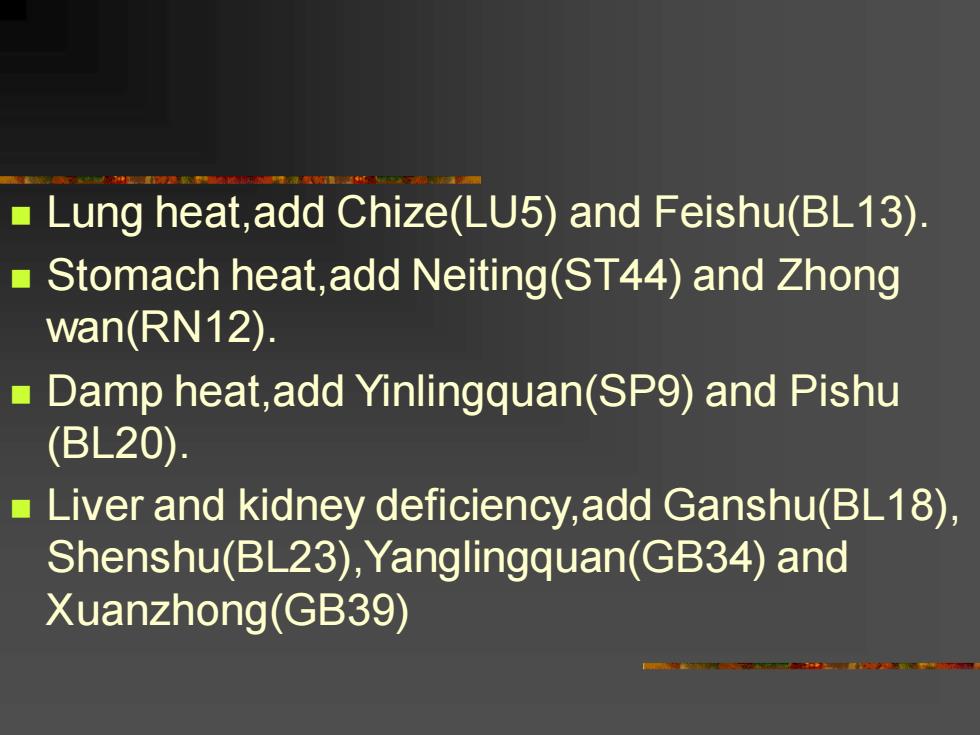
Lung heat,add Chize(LU5)and Feishu(BL13) Stomach heat,add Neiting(ST44)and Zhong wan(RN12). Damp heat,add Yinlingquan(SP9)and Pishu (BL20). Liver and kidney deficiency,add Ganshu(BL18) Shenshu(BL23),Yanglingquan(GB34)and Xuanzhong(GB39)
◼ Lung heat,add Chize(LU5) and Feishu(BL13). ◼ Stomach heat,add Neiting(ST44) and Zhong wan(RN12). ◼ Damp heat,add Yinlingquan(SP9) and Pishu (BL20). ◼ Liver and kidney deficiency,add Ganshu(BL18), Shenshu(BL23),Yanglingquan(GB34) and Xuanzhong(GB39)
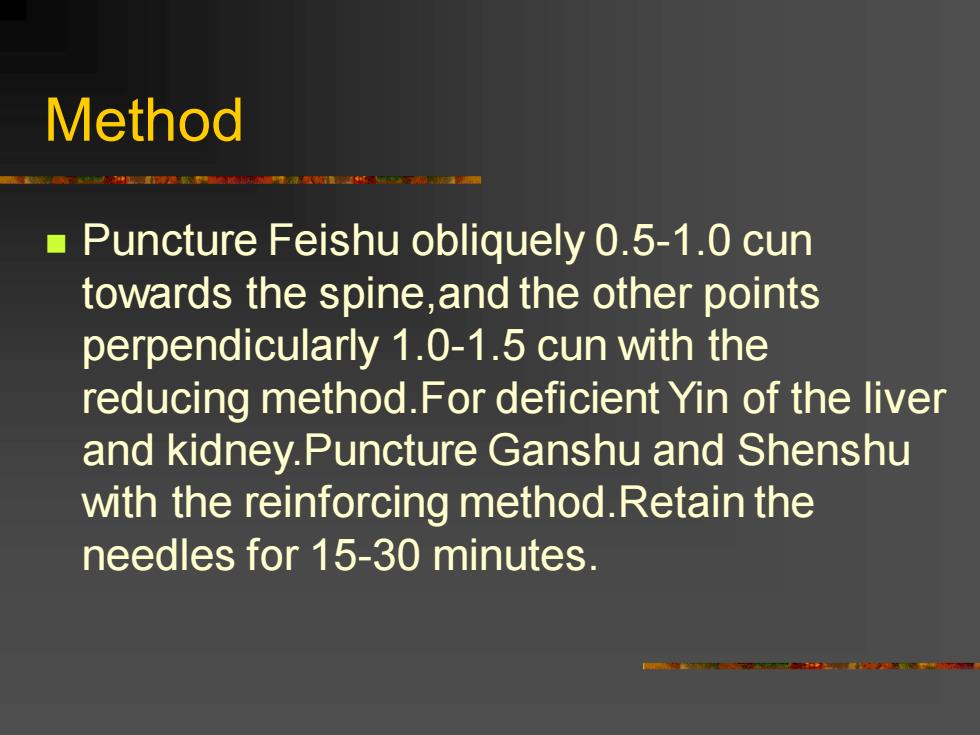
Method ■ Puncture Feishu obliquely 0.5-1.0 cun towards the spine,and the other points perpendicularly 1.0-1.5 cun with the reducing method.For deficient Yin of the liver and kidney.Puncture Ganshu and Shenshu with the reinforcing method.Retain the needles for 15-30 minutes
Method ◼ Puncture Feishu obliquely 0.5-1.0 cun towards the spine,and the other points perpendicularly 1.0-1.5 cun with the reducing method.For deficient Yin of the liver and kidney.Puncture Ganshu and Shenshu with the reinforcing method.Retain the needles for 15-30 minutes
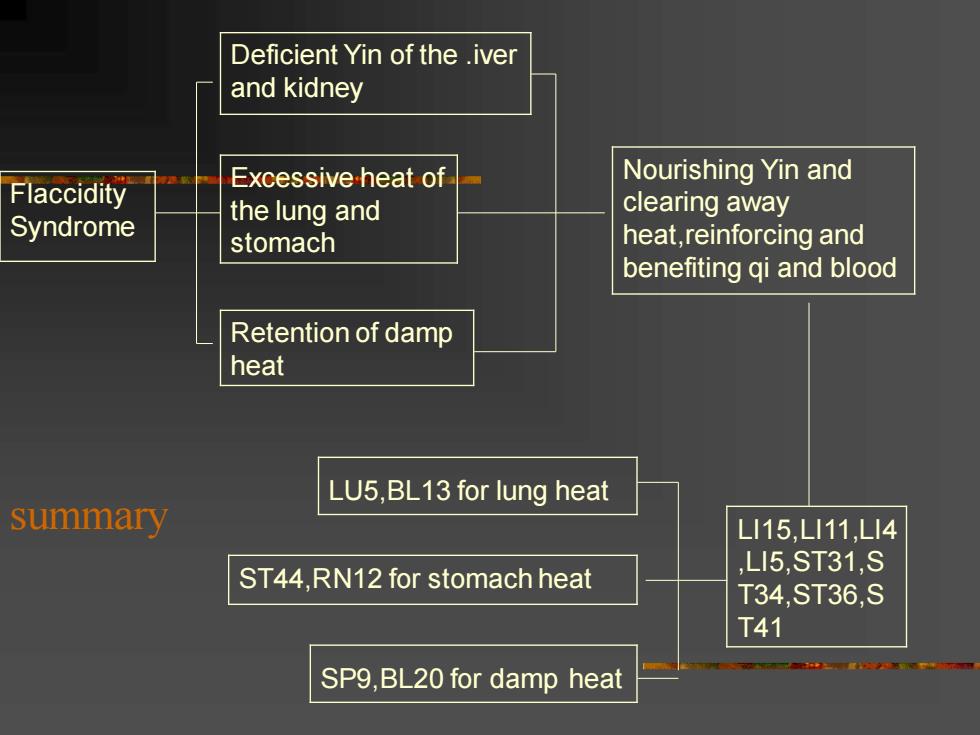
Deficient Yin of the iver and kidney Nourishing Yin and Flaccidity Excessive heat of clearing away Syndrome the lung and stomach heat,reinforcing and benefiting qi and blood Retention of damp heat LU5,BL13 for lung heat summary LI15,LI11,L14 ST44,RN12 for stomach heat ,LI5,ST31,S T34,ST36,S T41 SP9,BL20 for damp heat
Flaccidity Syndrome Excessive heat of the lung and stomach Retention of damp heat Deficient Yin of the .iver and kidney Nourishing Yin and clearing away heat,reinforcing and benefiting qi and blood LI15,LI11,LI4 ,LI5,ST31,S T34,ST36,S T41 LU5,BL13 for lung heat ST44,RN12 for stomach heat SP9,BL20 for damp heat summary